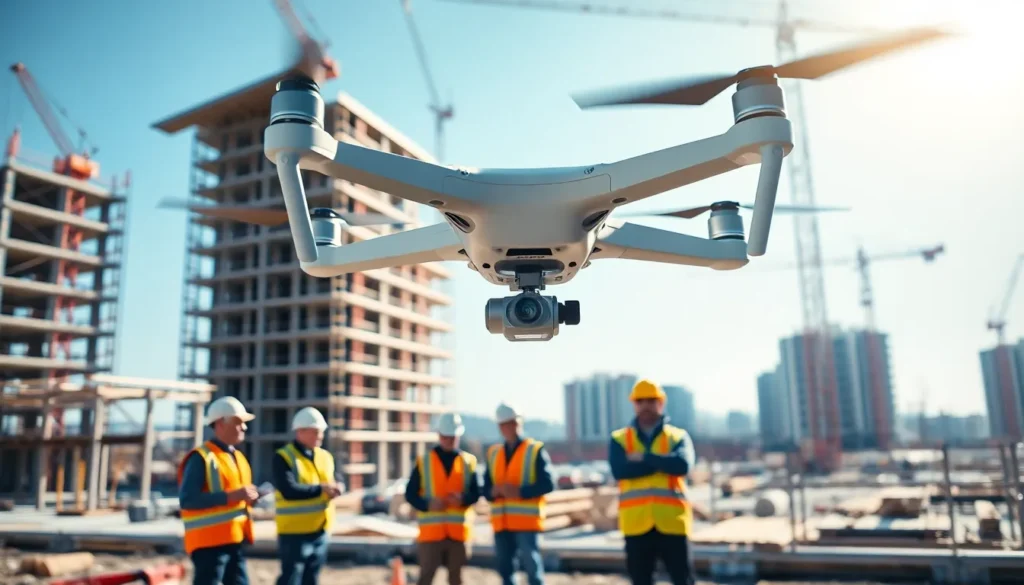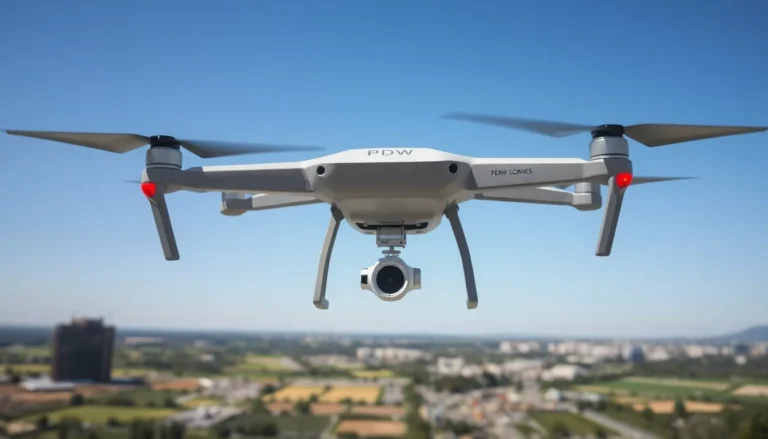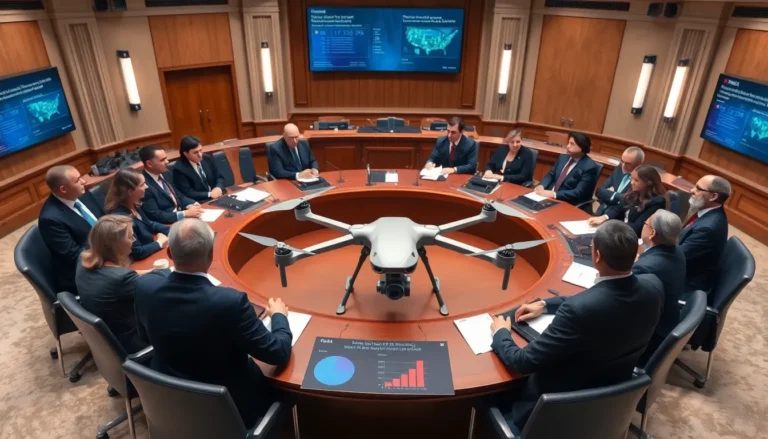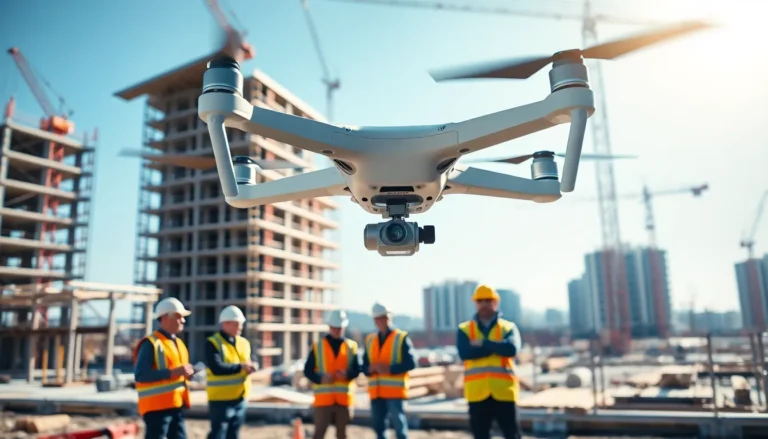Imagine being a bird soaring high above a construction site, effortlessly inspecting every nook and cranny without even breaking a sweat. No, it’s not a scene from a quirky cartoon. With inspection drones, that once impossible vision is now a reality. These remarkable devices are changing the way industries manage inspections and enhancing safety, efficiency, and accuracy. If you’ve ever been frustrated by the tediousness of manual inspections or the risks involved, welcome to the future where drones take the wheel, or rather, the sky. From construction to energy, let’s immerse and explore how inspection drones are shaking things up.
Table of Contents
ToggleWhat Are Inspection Drones?
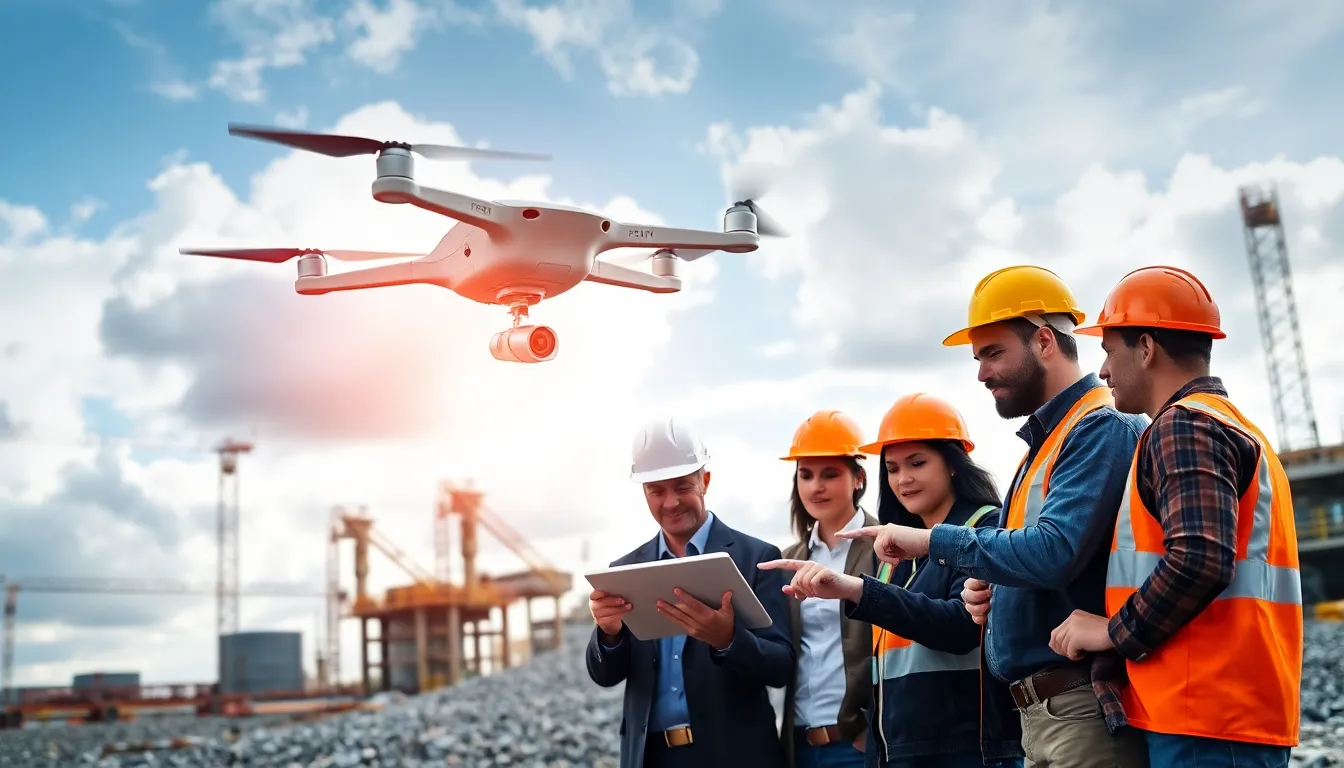
Inspection drones, or unmanned aerial vehicles (UAVs), are advanced tech wonders equipped with cameras and sensors. They can fly into hard-to-reach areas, providing real-time visual data and detailed inspections without the need for scaffolding or ladders. These machines come in various sizes and features, allowing them to cater to specific tasks across industries. Whether it’s a small quadcopter or a more robust model, inspection drones have become essential tools for a variety of sectors.
These drones are not merely toys for tech enthusiasts: they’re sophisticated tools powered by cutting-edge technology. Many come integrated with high-resolution cameras, thermal imaging, and even LiDAR sensors. This tech wizardry allows them to capture not just images but also critical data that can pinpoint problems early, saving time and future headaches.
Applications of Inspection Drones
The versatility of inspection drones is astounding. They are making a splash in several fields, and here are just a few prominent applications:
Construction and Infrastructure
Drones equipped with cameras can conduct site inspections, monitor progress, and ensure safety compliance. They can also create detailed 3D models of structures from aerial imagery, helping architects and engineers visualize projects.
Energy Sector
From wind turbines to power lines, drones are a go-to for inspecting critical infrastructure. They can quickly locate wear or damage in hard-to-reach places, making inspections safer and more efficient.
Agriculture
Farmers are turning to drones to monitor crops, assess health, and even optimize irrigation systems. High-resolution images allow for quick estimations of crop yields, giving farmers a leg up on their competition.
Telecom and Communication
Inspection drones can streamline the evaluation of antennas on towers and help ascertain the condition of cabling, all while minimizing risks associated with climbing high structures.
Disaster Response
During disasters, drones offer immediate aerial views, providing first responders with invaluable intel to assess the situation quickly and efficiently. These gadgets can navigate dangerous zones without putting human lives at risk.
Benefits of Using Inspection Drones
Using inspection drones brings a wealth of benefits, and here are some of the most compelling:
Enhanced Safety
Many traditional inspections require workers to climb heights or navigate hazardous areas. Drones fly high and avoid dangerous situations, ensuring that worker safety is prioritized.
Time Efficiency
In comparison to traditional methods, which can take hours or days, drones can perform inspections in a fraction of the time. This efficiency translates to faster reporting and decision-making.
Cost Reductions
While investing in drones can seem hefty at first, the savings add up quickly. Reduced labor costs, fewer equipment rentals, and minimized downtime lead to substantial overall savings.
Comprehensive Data
Drones collect more data than humans can, providing detailed imagery and measurements that assist in analysis and future planning. This wealth of information can help stakeholders make informed decisions, mitigating risks before they even arise.
Challenges and Limitations
Even though their many advantages, inspection drones are not without challenges.
Regulatory Hurdles
Operating drones requires navigating a complex web of regulations that can vary by state or country. Getting the proper certifications and maintaining compliance can be a challenging job.
Technical Limitations
While many drones perform exceptionally well, limitations in battery life can restrict their usage times. High-resolution cameras and sensors consume energy, which means longer inspections might require additional equipment or backup batteries.
Weather Dependencies
Drones aren’t fans of harsh weather. Rain, extreme winds, or snow can halt operations, making scheduling critical for successful inspections.
Training Needs
Operating drones effectively requires training and expertise. Without skilled pilots, companies risk mishaps that may compromise data collected.
Future Trends in Inspection Drone Technology
As technology marches forward, the capabilities of inspection drones will only grow. Here are some trends to watch:
Increased Automation
With advancements in AI and machine learning, future drones may operate with little human intervention. Think autonomous inspection routes, data collection, and even real-time analytics.
Enhanced Data Analytics
Future drones are poised to combine the data they collect with advanced analytics tools, providing insights that will help industries make predictive assessments instead of just reactive ones.
Integration with Other Technologies
Expect to see drones working in tandem with other technologies like IoT sensors, where they gather data and relay it back to centralized systems for comprehensive analysis and monitoring.
Regulatory Evolution
As the benefits of drone technology become clearer, regulatory bodies may adapt rules to provide a framework that encourages innovation while still ensuring public safety.

